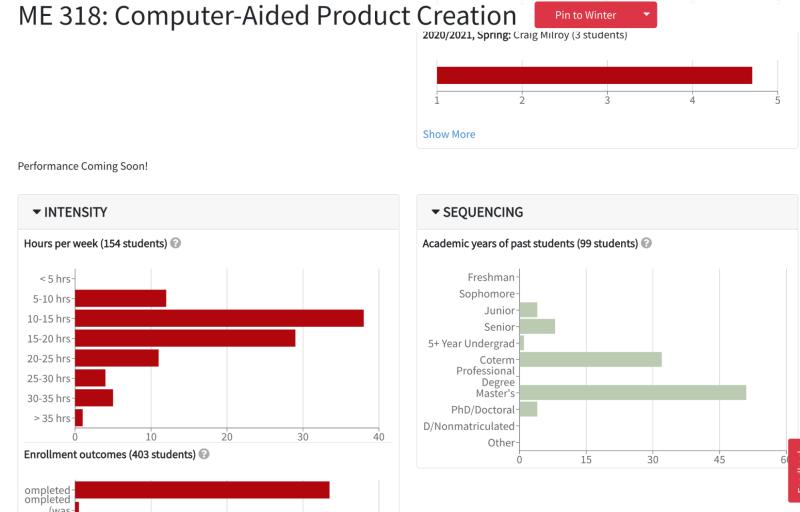Carta’s grade distribution feature had long been a popular resource for students as they selected classes each quarter. The feature captured student performance from previous iterations of a class, displaying the proportion of each letter grade received in a bar chart.
That is, until it was indefinitely suspended at Stanford administration’s request in 2020, amid the chaos of the pandemic. However, when a course’s Carta page is now accessed, a message above the intensity chart reads, “Performance coming soon!”
The University claims not to be aware of these plans.
In an email to The Daily, university spokesperson Luisa Rapport wrote that the Faculty Senate “is the only body with authority to grant CARTA access to grade distributions. Neither the Committee on Undergraduate Standards and Policy (C-USP) nor the Committee on Graduate Studies (C-GS) has brought a proposal to the Faculty Senate to reinstate the grade distribution feature in Carta.”
The Carta leadership team declined to comment on the new message.
Carta provides student-written reviews for Stanford classes, along with ratings for weekly time commitment, enrollment outcomes and academic years of past students. The CartaLab-operated Carta V1 was terminated by the University in 2020 to be replaced by the university-independent and student-run Carta V2. Development of Carta V2 began in 2019 with an objective of creating a more robust system capable of handling more traffic and higher speeds.
The discontinuation of the grade distribution feature spawned the 2020 creation of a website with images of grade distributions for many Stanford classes. According to the site, the distributions are representative of data captured in August of that year. The developer’s identity remains anonymous and they did not disclose how they retrieved the data. The site also includes a link to a Google form for a petition to reinstate grade distribution which received over 1100 signatures.
Carta remains an immensely popular resource for many Stanford students, demonstrated by Carta’s tendency to go down during course enrollments On March 1, Alyssa Charley ’23 had challenges accessing both the SimpleEnroll and Carta websites. After SimpleEnroll kept crashing, “I went back to Carta and tried reloading, but it would not reach the site,” Charley said.
As a freshman, Sean Casey ’22 M.S. ’23 initially pushed back against the feature’s removal, citing “all information is good information.” After hearing about a 2018 Stanford study that assessed Carta’s impact, he says he changed his mind. In the study, researchers found that Carta usage led to lower grades, while, ironically, not having a measurable impact on course selection itself.
“Grades matter but I found I was very unsatisfied [choosing courses] based on whether I thought I could do well rather than based on whether I was interested in the material, thought the professor was cool, or thought I would have fun taking the class,” Casey said.
Some students find this feature essential to maintaining a GPA fit for graduate school applications. “As a student pursuing grad school, I’d rather find out [a course’s grade distributions] before I enroll, than waste my time on a class that’s going to tank my GPA,” Adam Cohen ’23 wrote.
Other students appreciate the grade performance feature for peace of mind. “I’m in a class right now and I feel like I’m going to fail, but I know usually that Stanford doesn’t let people fail. However, I’d like to confirm that with empirical data [through the Carta performance feature],” Jodalys Herrera ’23 MS ’23.
While some students are keeping their fingers crossed that the grade distribution feature is coming back, others say they’re just fine without it. “Now, honestly, I’m anti-grade distribution,” Casey said.
